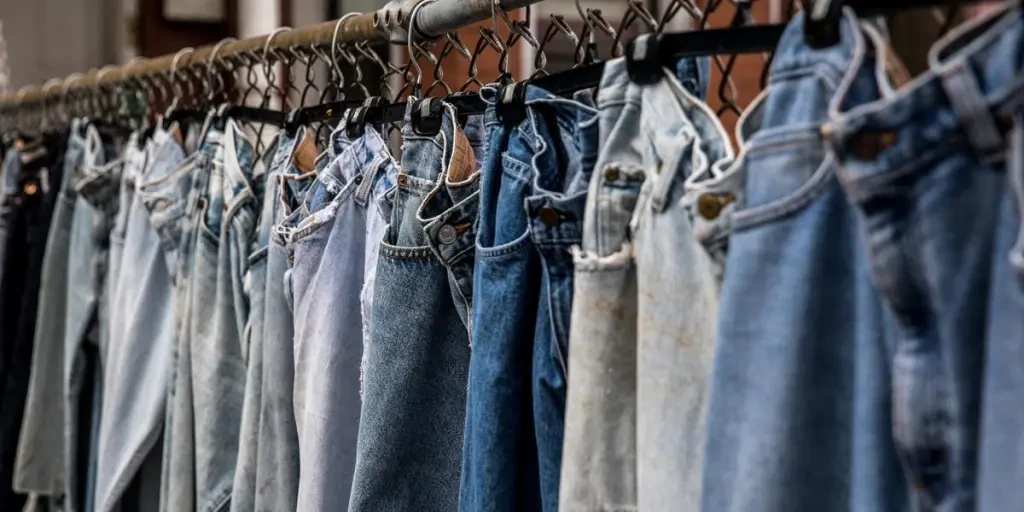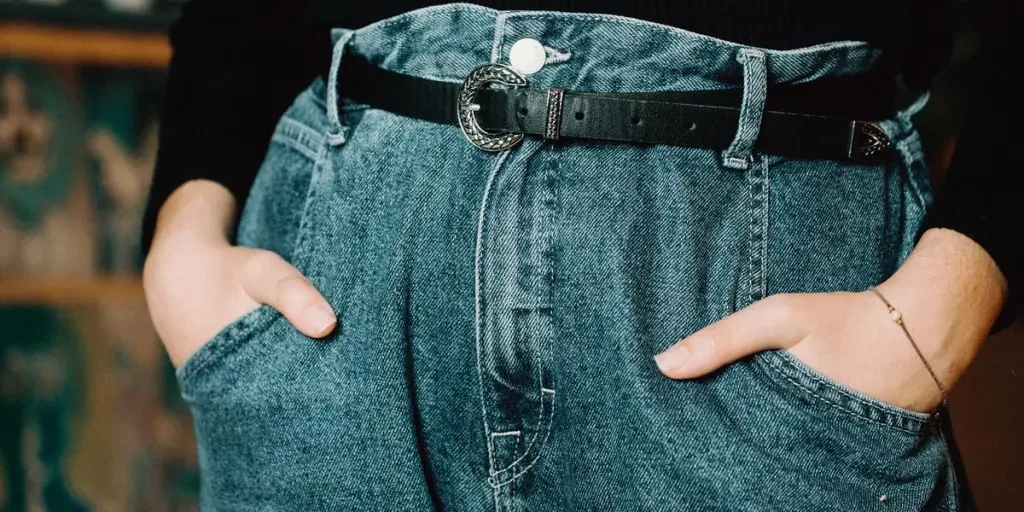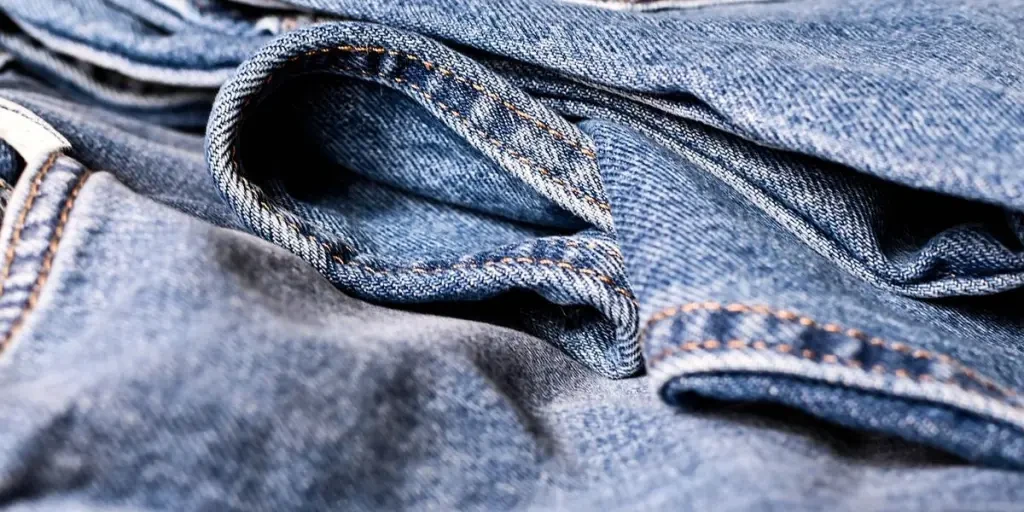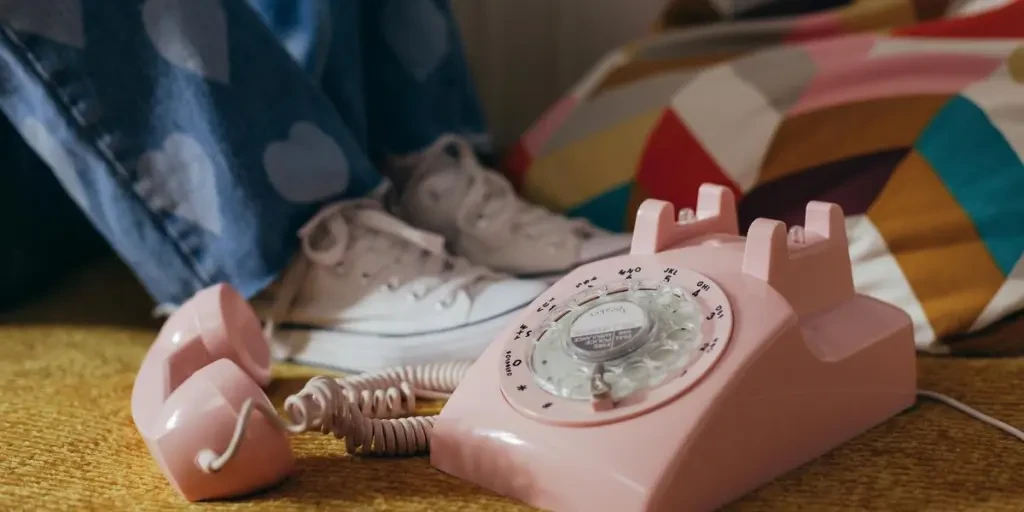Vintage baggy jeans are making a significant comeback in the fashion industry. Known for their relaxed fit and nostalgic appeal, these jeans are becoming a staple in wardrobes around the world. This article delves into the market trends, key players, and cultural influences that are driving the resurgence of vintage baggy jeans.
Table of Contents:
Market Overview: The Resurgence of Vintage Baggy Jeans
The Allure of Texture and Materials in Vintage Baggy Jeans
Design and Cut: The Signature Look of Vintage Baggy Jeans
Color and Patterns: Making a Statement with Vintage Baggy Jeans
Cultural Influence and Heritage: The Story Behind Vintage Baggy Jeans
Conclusion
Market Overview: The Resurgence of Vintage Baggy Jeans

The global denim jeans market is experiencing a notable shift, with vintage baggy jeans emerging as a key trend. According to Research and Markets, the global premium denim jeans market size reached US$ 9.4 billion in 2023 and is expected to grow to US$ 14.1 billion by 2032, exhibiting a CAGR of 4.6% during 2023-2032. This growth is driven by rising consumer affluence, design advancements, and cultural trends that emphasize comfort and style.
Data of Market Performance
The denim jeans market is forecasted to grow by USD 2.28 billion during 2023-2028, accelerating at a CAGR of 6.71% during the forecast period, as reported by Research and Markets. This robust growth is attributed to expanding retail space, increasing consciousness regarding clothes, and product innovations. The resurgence of vintage baggy jeans is a significant contributor to this growth, as consumers seek styles that offer both comfort and a nod to past fashion trends.
Regional Insights
The Asia Pacific region is currently the largest segment in the premium denim jeans market, driven by rapid economic growth, increasing urbanization, and a rising middle-class consumer base. According to the Observatory of Economic Complexity (OEC), Asian economies, including China, Pakistan, India, Thailand, Japan, and Vietnam, are major exporters of denim cotton. This regional dominance is further bolstered by a growing appetite for Western fashion trends and a rising awareness of brands and quality.
In North America, the premium denim jeans market is characterized by a strong preference for quality and brand name. Consumers in this region are often willing to pay a premium for jeans that offer both style and durability. The market is influenced by the latest fashion trends emanating from major fashion hubs, with a steady demand for both classic and innovative denim styles.
Key Players
Leading brands in the premium denim jeans market are investing heavily in research and development to innovate in denim fabric and design. According to Research and Markets, key players such as Levi Strauss & Co., Guess Inc., and Kering are focusing on sustainable practices, using organic cotton, reducing water consumption, and implementing eco-friendly dyeing techniques. These efforts align with growing consumer concerns about environmental impact and ethical manufacturing.
Levi Strauss & Co. has launched a circular version of its iconic 501 Original jeans, made with a mix of organic cotton and post-consumer recycled denim, designed to be recyclable. Guess Inc. has introduced a global-scale project at Pitti Uomo, emphasizing eco-conscious practices. Kering has developed Sonovia’s D(y)enim indigo yarn dyeing ultrasound technology, reducing water use in the dyeing process by up to 85%.
The Allure of Texture and Materials in Vintage Baggy Jeans

Exploring the Fabrics: From Denim to Corduroy
Vintage baggy jeans are celebrated not only for their distinctive style but also for the rich textures and materials that define them. Denim, the quintessential fabric of jeans, remains the most popular choice. Its durability, versatility, and ability to age gracefully make it a staple in the world of vintage fashion. According to a professional report, the use of Better Cotton Initiative (BCI), Global Organic Textile Standard (GOTS)-certified organic, and Global Recycled Standard (GRS)-certified recycled cotton is becoming increasingly prevalent. These sustainable materials not only contribute to the eco-friendly movement but also enhance the quality and feel of the jeans.
Corduroy, another fabric often associated with vintage baggy jeans, offers a unique texture that sets it apart from denim. Its ribbed surface adds a tactile dimension to the jeans, making them visually and physically appealing. The use of corduroy in vintage baggy jeans is a nod to the 70s, a decade known for its experimental fashion trends. The combination of denim and corduroy in vintage baggy jeans creates a dynamic interplay of textures that appeals to fashion enthusiasts and collectors alike.
The Comfort Factor: Why Texture Matters
The texture of the fabric plays a crucial role in the comfort of vintage baggy jeans. Denim, with its sturdy yet flexible nature, provides a comfortable fit that molds to the wearer’s body over time. This adaptability is one of the reasons why denim remains a favorite among vintage baggy jeans enthusiasts. The use of raw denim or rinse wash, as reported by industry experts, ensures a clean and smart look while maintaining the fabric’s natural texture.
Corduroy, on the other hand, offers a softer and warmer alternative to denim. Its plush texture makes it ideal for cooler weather, providing both comfort and style. The ribbed pattern of corduroy also adds an element of sophistication to the jeans, making them suitable for various occasions. The comfort factor of vintage baggy jeans is further enhanced by the use of sustainable materials, which are not only environmentally friendly but also gentle on the skin.
Design and Cut: The Signature Look of Vintage Baggy Jeans

Iconic Designs: What Makes Them Stand Out
Vintage baggy jeans are characterized by their distinctive designs that set them apart from other styles. One of the most iconic features is the high-rise waist, which not only provides a flattering fit but also adds a touch of retro charm. The high-rise design is often complemented by slim flared silhouettes, creating a balanced and stylish look. According to a professional report, the use of statement Western-inspired pockets adds a unique touch to the jeans, making them stand out in the crowded market.
Another notable design element is the use of contrasting topstitch details and stitched center crease lines. These subtle yet impactful details enhance the overall aesthetic of the jeans, giving them a polished and refined look. The incorporation of Western front flap pockets further adds to the vintage appeal, making these jeans a must-have for fashion enthusiasts.
The Perfect Cut: Balancing Style and Comfort
The cut of vintage baggy jeans is designed to strike a perfect balance between style and comfort. The wide-leg fit, as highlighted in industry reports, is a key trend that continues to dominate the market. This relaxed fit not only provides ample room for movement but also creates a laid-back and effortless look. The use of mid-rise and high-rise cuts ensures a comfortable fit that flatters various body types.
The versatility of the cut allows vintage baggy jeans to be styled in numerous ways, making them a versatile addition to any wardrobe. Whether paired with a casual t-shirt or a sophisticated blouse, these jeans can effortlessly transition from day to night, making them a favorite among fashion-forward individuals.
Color and Patterns: Making a Statement with Vintage Baggy Jeans

Classic Colors: Timeless Appeal
The color palette of vintage baggy jeans plays a significant role in their timeless appeal. Classic colors such as ice blue, electric indigo, and midnight blue are perennial favorites that never go out of style. These shades not only complement a wide range of outfits but also exude a sense of sophistication and elegance. The use of unbleached cotton and oat milk hues adds a touch of warmth and earthiness to the jeans, making them suitable for various occasions.
The timeless appeal of these classic colors is further enhanced by the use of sustainable materials and eco-friendly dyes. According to industry reports, the use of organic enzyme washes and laser finishing techniques helps recreate vintage fades, giving the jeans an authentic and worn-in look.
Bold Patterns: Adding a Modern Twist
While classic colors remain popular, bold patterns are making a significant impact in the world of vintage baggy jeans. The use of patchwork and geometric constructions, as reported by industry experts, adds a modern twist to the traditional design. These patterns not only create visual interest but also showcase the artisanal craftsmanship that goes into making each pair of jeans.
The incorporation of contrasting colors and artisanal stitching further enhances the uniqueness of the jeans, making them a statement piece in any wardrobe. The use of sashiko stitching, for example, adds a handcrafted and repaired look, giving the jeans a sense of history and character.
Cultural Influence and Heritage: The Story Behind Vintage Baggy Jeans

A Nod to the Past: Historical Significance
Vintage baggy jeans are deeply rooted in cultural and historical significance. The 70s, a decade known for its bold and experimental fashion trends, played a pivotal role in shaping the design and aesthetic of these jeans. The high-rise waist, flared silhouettes, and Western-inspired details are all reminiscent of this iconic era. According to historical reports, the use of denim and corduroy during this time was a reflection of the cultural and social movements that defined the decade.
The historical significance of vintage baggy jeans is further highlighted by their association with various subcultures and fashion movements. From the rebellious spirit of the punk rock scene to the laid-back vibe of the hippie movement, these jeans have been a symbol of self-expression and individuality.
Modern Revival: How Culture Shapes Trends
The modern revival of vintage baggy jeans is a testament to their enduring appeal and cultural significance. As reported by industry experts, the resurgence of 70s-inspired fashion trends has brought these jeans back into the spotlight. The influence of contemporary culture, including music, art, and social media, has played a significant role in shaping the current trends.
The use of sustainable materials and eco-friendly practices in the production of vintage baggy jeans reflects the growing awareness and demand for ethical fashion. The incorporation of modern design elements, such as bold patterns and artisanal stitching, adds a fresh and contemporary twist to the traditional design, making these jeans relevant in today’s fashion landscape.
Conclusion
Vintage baggy jeans are more than just a fashion statement; they are a reflection of cultural heritage, historical significance, and modern innovation. The allure of texture and materials, iconic designs, timeless colors, and bold patterns all contribute to their enduring appeal. As the fashion industry continues to evolve, vintage baggy jeans remain a versatile and stylish choice that transcends trends and seasons. The future of vintage baggy jeans looks promising, with a continued focus on sustainability, innovation, and cultural influence, ensuring that these iconic jeans will remain a staple in the world of fashion for years to come.




